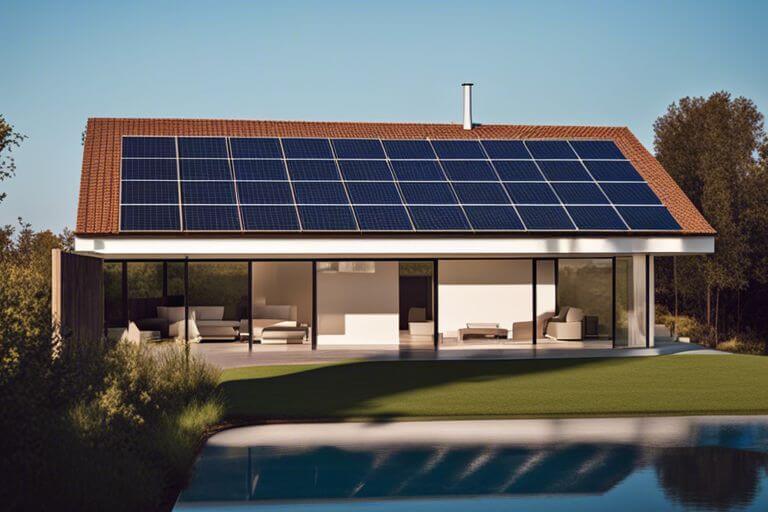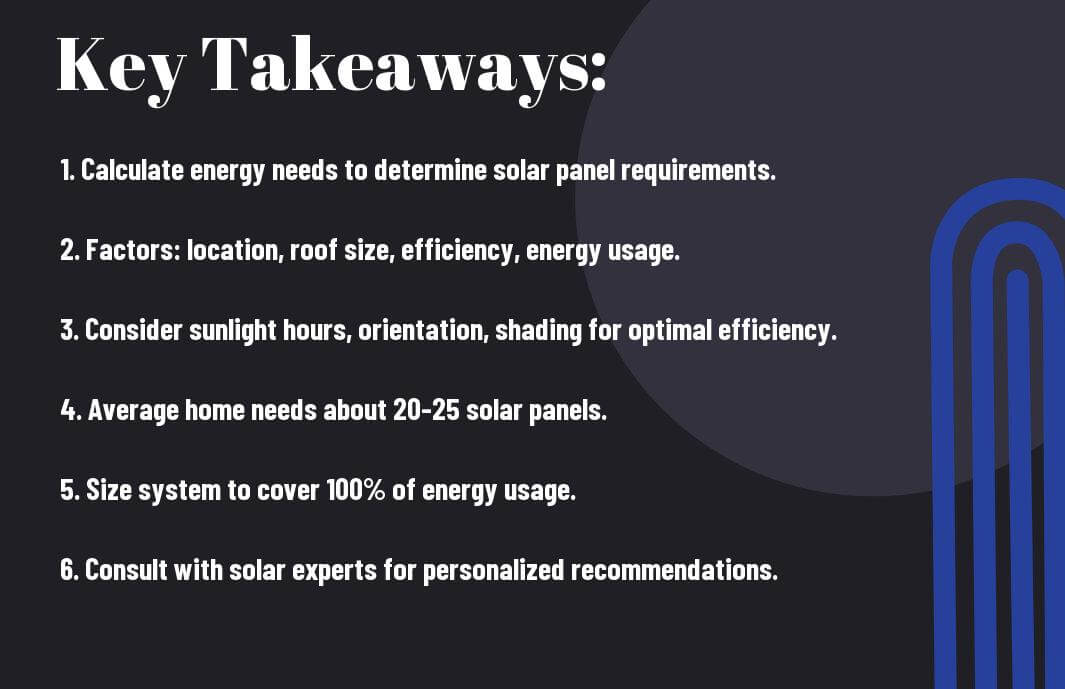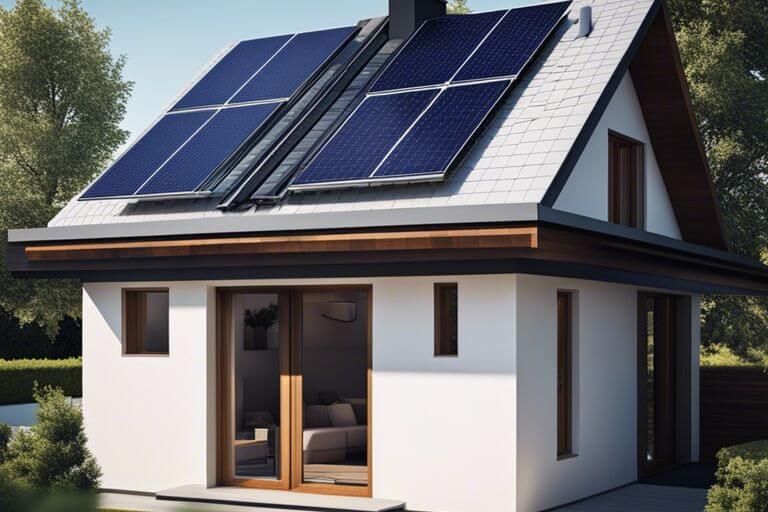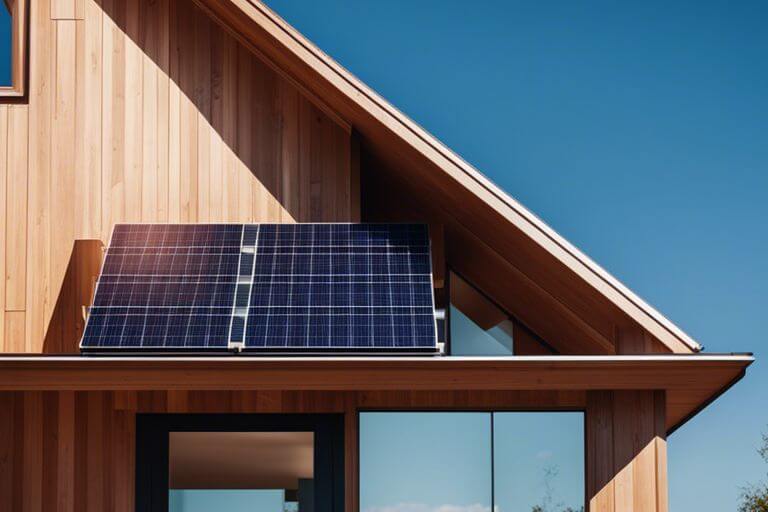It’s time to demystify the process of determining how many solar panels you need to power your home. Understanding the factors that come into play, such as your energy consumption, location, and panel efficiency, can help you make an informed decision that suits your household’s needs. Let’s break down the calculations and shed light on the path to a more sustainable energy future for your home.

Key Takeaways:
- Energy Consumption: The number of solar panels needed to power a house depends on its energy consumption which varies based on appliances, climate, and lifestyle.
- Roof Space: The available roof space and orientation are crucial factors in determining the number of solar panels that can be installed to meet energy needs.
- Efficiency and Panel Wattage: Higher efficiency panels and wattage can reduce the number of solar panels needed, making it important to consider technology advancements when planning a solar installation.

Determining Your Energy Needs
Calculating Your Daily Energy Consumption
To determine how many solar panels you need to power your house, you first need to calculate your daily energy consumption. This involves looking at your energy bills to see how many kilowatt-hours (kWh) you use on average each day. You can also use monitoring devices to track your usage over a period of time. By understanding your daily energy consumption, you can better estimate the number of solar panels required to meet your needs.
Factors Affecting Energy Requirements
To accurately determine the number of solar panels needed for your home, there are several factors that can influence your energy requirements. These factors include the size of your home, the number of occupants, your energy usage habits, the efficiency of your appliances, and the local weather patterns. Any changes in these factors can impact the amount of energy your household consumes and thus the number of solar panels you will need.
- Your lifestyle and habits play a significant role in determining your energy needs. For example, if you work from home or have energy-intensive hobbies, you may require more solar panels to meet your energy demands.
- The energy efficiency of your home and appliances can also affect your solar panel requirements. Upgrading to energy-efficient appliances and improving insulation can help reduce your overall energy consumption.
For instance, if you live in an area with long winters and limited sunlight, you may need additional solar panels to compensate for the reduced energy generation during those months. It’s crucial to consider these factors when determining the optimal number of solar panels to power your home efficiently.
Solar Panel Efficiency and Capacity
How Solar Panels Generate Electricity
Any house can be powered by solar panels, but how do these panels actually work to generate electricity? With photovoltaic solar panels, sunlight is converted into electricity through the photovoltaic effect. When light photons strike the surface of the solar panel, they knock electrons loose from the atoms in the semiconductor material, generating an electric current. This direct current (DC) is then converted into alternating current (AC) by an inverter, making it usable for your home’s electrical needs.
Measuring Solar Panel Efficiency
Solar panel efficiency is a crucial factor to consider when determining how many solar panels you need to power your house. Efficiency refers to the amount of sunlight that a solar panel can convert into electricity. The higher the efficiency rating of a solar panel, the more electricity it can generate from the same amount of sunlight. Typically, residential solar panels have an efficiency range of 15% to 22%, with some premium panels reaching efficiency levels of up to 23% or more. When choosing solar panels for your home, it’s important to balance efficiency with cost to find the best option for your needs.
Solar panels with higher efficiency ratings may be more expensive upfront, but they can generate more electricity in the long run, potentially reducing your overall electricity bills and increasing the return on your solar investment. Keep in mind that your geographic location, roof orientation, and shading can also impact the overall efficiency of your solar panels, so it’s crucial to consider these factors when determining the optimal number of panels for your home.
Assessing Your Roof’s Solar Potential
Once again, before determining how many solar panels you need to power your house, you must assess your roof’s solar potential. This step is crucial to ensure that your solar panel system operates efficiently.
Evaluating Roof Size and Orientation
Assessing your roof size and orientation is vital in determining the feasibility of installing solar panels. The ideal roof for solar panel installation is large enough to accommodate the panels required to meet your energy needs. Additionally, the orientation of your roof plays a significant role in the amount of sunlight your panels will receive. South-facing roofs typically receive the most sunlight throughout the day, making them the most suitable for solar panel installation.
Shading and Obstruction Considerations
One factor to consider when assessing your roof’s solar potential is shading from nearby trees, buildings, or other obstructions. These can significantly impact the efficiency of your solar panel system by blocking sunlight and reducing energy production. It’s important to evaluate any potential shading that may occur throughout the day and seasons to determine the best location for your solar panels.
Another consideration is the angle of your roof, as a steep angle may be more prone to shading during certain times of the day. You may need to trim trees or adjust the placement of your panels to minimize shading and maximize solar exposure.

Sizing Your Solar Panel System
Calculating the Required Solar Panel Array Size
All set to harness the power of solar energy for your home? The first step is determining the size of the solar panel system you need. This calculation involves assessing your energy consumption, sunlight hours in your location, and the efficiency of the solar panels. By analyzing these factors, you can determine the number of solar panels required to meet your household’s energy needs.
Considering Inverter and Battery Requirements
Panel size is just one piece of the puzzle when it comes to setting up your solar power system. You also need to consider the inverter and battery requirements. The inverter is crucial as it converts the direct current (DC) produced by the solar panels into usable alternating current (AC) for your home. Additionally, batteries may be necessary to store excess energy generated during the day for use at night or on cloudy days.
When identifying an inverter for your solar panel system, ensure it can handle the wattage produced by your panels and supports any future expansions. As for batteries, you’ll need to determine the capacity based on your energy consumption patterns and the duration you want to be energy independent. These components are vital in ensuring your solar panel system runs smoothly and efficiently, providing you with reliable renewable energy.
Local Building Codes and Regulations
Permits and Inspections
To ensure that your solar panel installation is safe and up to code, you will need to obtain the necessary permits from your local government. These permits typically involve submitting plans and specifications of your solar panel system for review. Once approved, you will also need to schedule inspections at various stages of the installation process to ensure everything is being done correctly and meets the required standards.
Compliance with Local Zoning Laws
To avoid any legal issues or fines, it is crucial to comply with your local zoning laws when installing solar panels on your property. These laws dictate where and how solar panels can be placed, the height restrictions, and aesthetic considerations. Make sure to check with your local zoning office to understand the specific regulations that apply to your area before proceeding with the installation.
As an example, some neighborhoods may have strict guidelines on how visible solar panels can be from the street, which may affect the placement and tilt of your solar panels. By adhering to these regulations, you can ensure a smooth installation process and prevent any potential conflicts with your neighbors or local authorities.
Cost and ROI Analysis
Now let’s examine the financial aspect of solar panel installation for your home. When considering how many solar panels are needed to power your house, one of the key factors to take into account is the initial investment and installation costs.
Initial Investment and Installation Costs
Analysis shows that the upfront cost of solar panels can vary depending on the size of your home and your energy needs. On average, the cost of installing a solar panel system for a typical American home can range from $15,000 to $25,000 before any tax incentives or rebates. This initial investment may seem significant, but it’s important to consider the long-term benefits and savings that solar power can provide.
Long-term Savings and Return on Investment
Longterm, investing in solar panels can lead to substantial savings on your electricity bills. By generating your own electricity from the sun, you can reduce or even eliminate your dependence on the grid, thus lowering your monthly energy costs. Additionally, many utility companies offer net metering programs that allow you to earn credits for excess energy produced by your solar panels, further increasing your savings.
Another factor to consider in the long-term savings and return on investment is the potential increase in the value of your home. Properties equipped with solar panels are often valued higher in the real estate market, offering a return on your initial investment should you decide to sell your home in the future.
Conclusion
Now that you have a better understanding of how many solar panels are needed to power a house, you can make a more informed decision about transitioning to solar energy. Remember that factors such as your energy consumption, location, and the efficiency of the panels will all play a role in determining the number of panels required. By investing in solar panels, not only can you reduce your carbon footprint, but you can also save money on your energy bills in the long run.
Q: How many solar panels are needed to power a house?
A: The number of solar panels needed to power a house depends on several factors such as the energy consumption of the house, the efficiency of the solar panels, the geographical location of the house, and the hours of sunlight received. On average, a typical American household may need between 20 to 25 solar panels to cover their electricity needs.
Q: What factors determine the number of solar panels needed for a house?
A: Factors like the energy consumption of the house, the efficiency of the solar panels, the geographical location of the house, and the hours of sunlight received play a crucial role in determining the number of solar panels needed to power a house. It is recommended to consult with a solar energy expert to accurately assess your specific needs.
Q: How can I calculate the number of solar panels required for my house?
A: To calculate the number of solar panels needed for your house, you can start by determining your average daily electricity consumption, considering the efficiency of the solar panels, the average sunlight hours in your location, and any applicable rebates or incentives. Online solar panel calculators are also available to help estimate the number of panels required for your specific energy needs.
